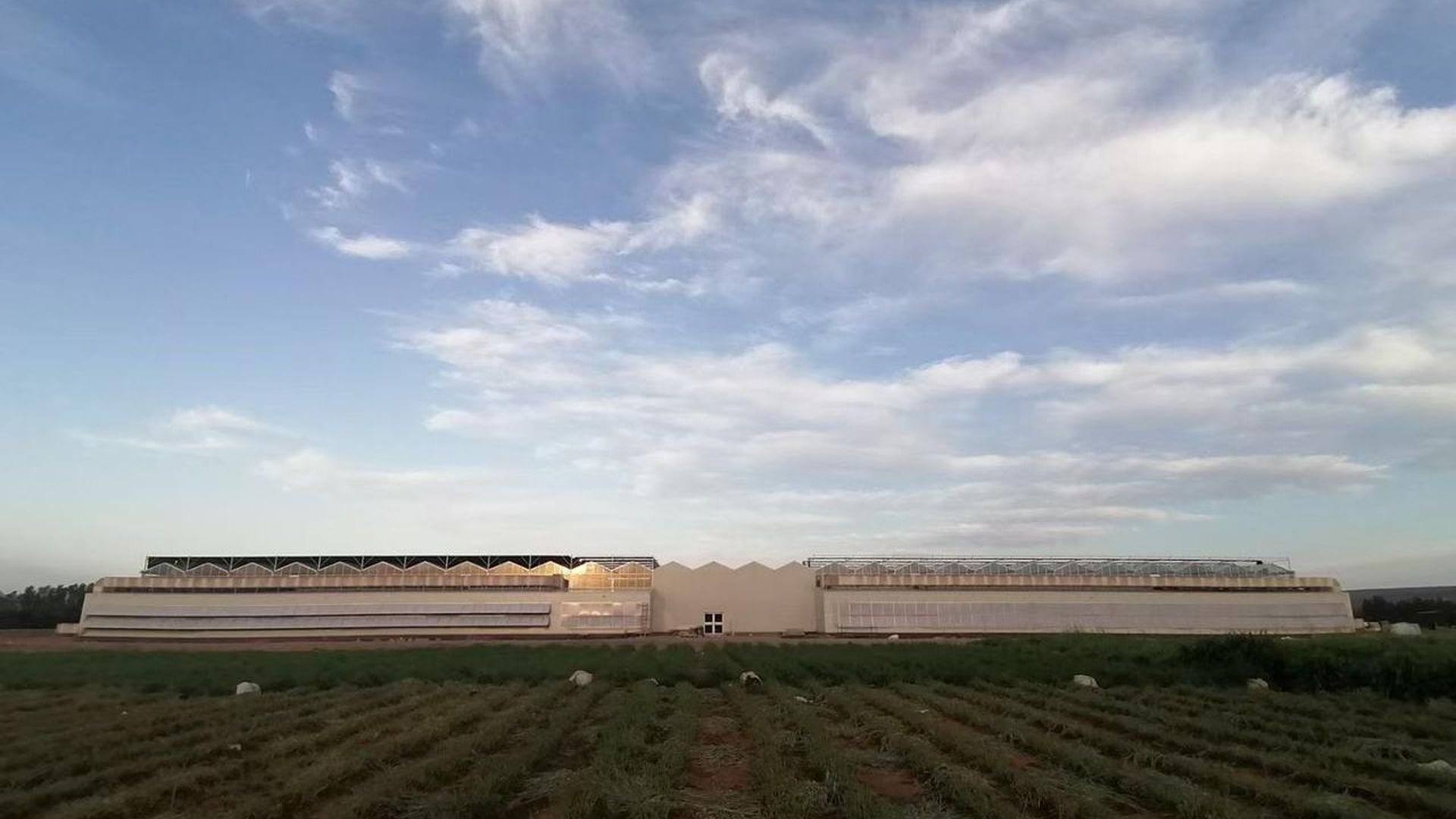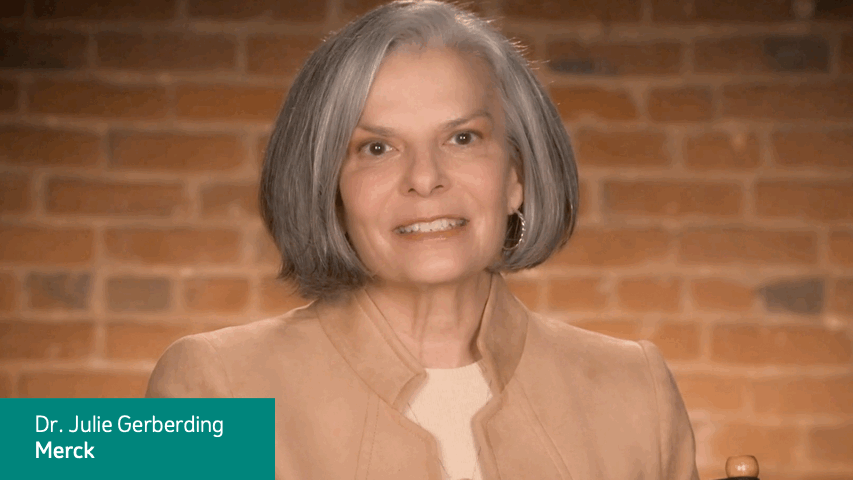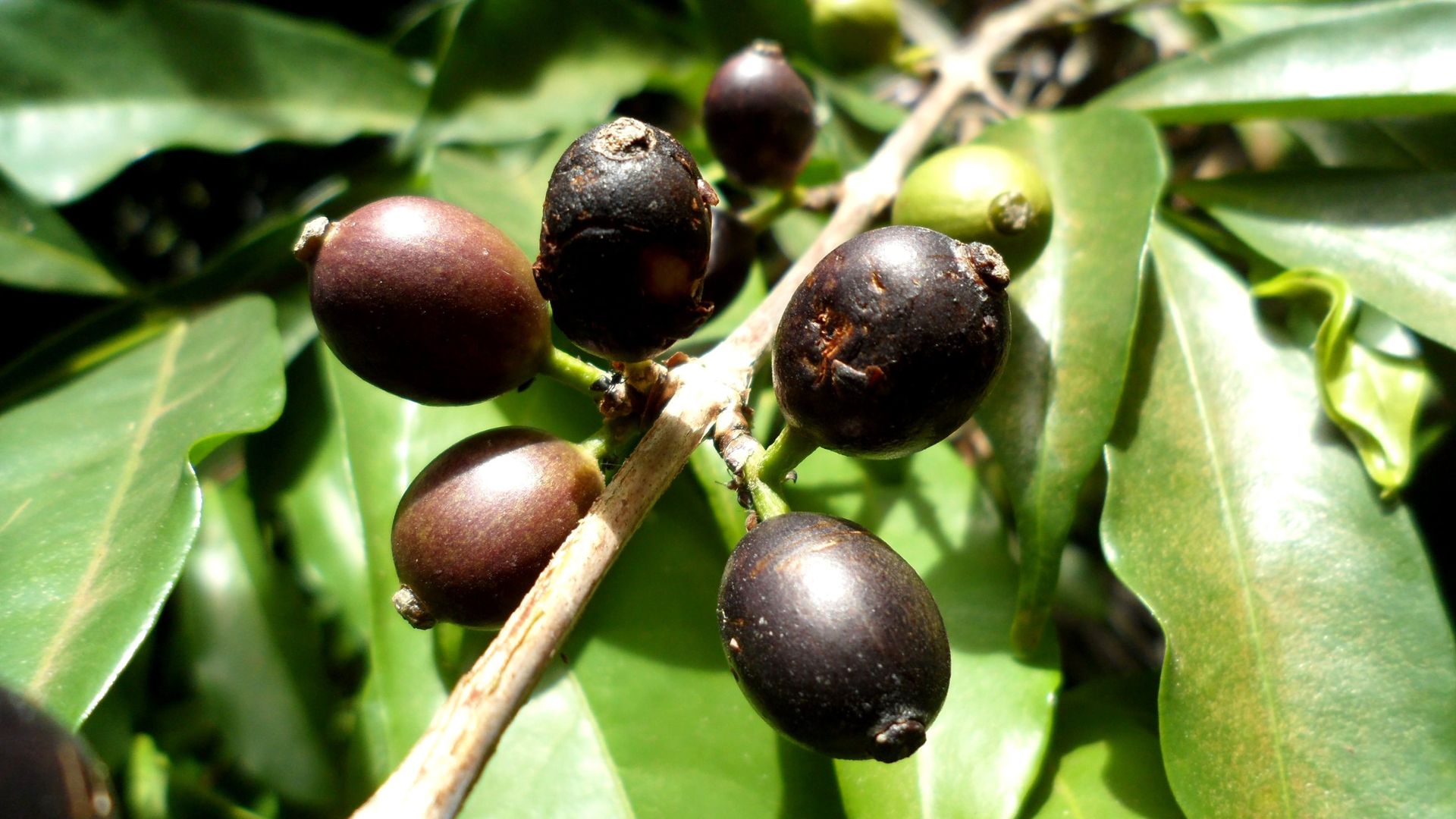| | | | | | | Presented By Merck | | | | Axios Science | | By Alison Snyder ·Apr 22, 2021 | | Welcome back to Axios Science. Today is Earth Day so this week we're looking at carbon storage at sea, saltwater greenhouses and more in about 1,895 words, a 7-minute read. - We're launching our latest Get Smart video short course about climate tech. Sign up here and get it 5/10.
- Send your feedback and ideas to me at alison@axios.com.
- Did someone forward this newsletter to you? Thank them for me and subscribe here.
| | | | | | 1 big thing: Putting carbon to rest under the sea |  | | | Illustration: Aïda Amer/Axios | | | | The Earth's ocean acts as a global climate regulator, and scientists are increasingly studying its chemistry and geology to find potential ways to store carbon dioxide captured from emissions or removed from the air, Axios' Jacob Knutson and I write. The big picture: Oceans are bearing some of the brunt of climate change — they're acidifying, warming at the surface and experiencing other damaging effects. But deploying wind and solar energy offshore, restoring coastal ecosystems and other efforts could turn the seas into a solution, Axios' Andrew Freedman reports. Vast, and far from humans, offshore sites are being studied by researchers for capturing and storing carbon. - Half of the roughly 10-20 trillion tons of CO2 storage capacity in the Earth's geology is located offshore, says Julio Friedmann of the Center on Global Energy Policy at Columbia University.
Background: One approach is to sequester carbon as part of enhanced oil recovery operations, in which CO2 is injected into reservoirs in the sea floor to push out remaining oil or gas, leaving the carbon dioxide stored within the porous rocks. What's new: Saline formations are found around the world, but basalt rock lines most of the oceanic crust and converts carbon dioxide into new minerals — a chemical reaction researchers are investigating to store carbon. - Unlike storing CO2 in a reservoir from where it might one day leak, "this removes it from the carbon cycle entirely," says geoscientist Rachel Lauer of the University of Calgary, who is part of a group of researchers studying the approach at a site off the coast of British Columbia.
- 95% of the CO2 injected in basalt at a site on land in Iceland — where the lava rocks form the land above the sea — turned into minerals within two years.
- Lauer and her colleagues geochemist Benjamin Tutolo and postdoctoral fellow Adedapo Awolayo are studying how fast mineralization of CO2 can happen in the undersea basalt formation off western Canada. They're looking at whether adding water to CO2 can speed the process and how to use seismic surveys to track the mineralization, which would occur in basalt buried under hundreds of meters of sediment on the ocean floor.
If CO2 injection can move offshore wherever there are basalt or saline formations, that could open up the possibility of pulling CO2 out of the air directly, anywhere, says Friedmann. - Yes, but: Direct air capture and negative emissions technologies don't currently operate at scale, in part because of the hefty price tag, so depending on them for climate change mitigation carries risk, whereas other solutions like cutting emissions and solar and wind power are already cost-competitive.
- But models suggest negative emissions will be required to help keep the climate below red lines, and supporters of carbon removal technologies say the price pales in comparison to the cost of carbon emissions to society, something that governments struggle to put a number on and that some economists argue has been historically low.
The team working off the coast of western Canada is looking to bring together renewable energy sources — mostly offshore wind — to provide energy to machines that pull carbon dioxide from the air or ocean and then inject it into the basalt. What to watch: Researchers are also studying ways to harness marine chemistry to remove carbon dioxide and reduce the acidity of the ocean, which is rising due to CO2 dissolving in the water and threatening ocean life. - The U.S. National Academy of Sciences recently convened a series of workshops to set research priorities for answering scientific, environmental and governance questions about the potential use of ocean alkalinity enhancement and other technologies along the coasts and at sea.
Go deeper. |     | | | | | | 2. A greenhouse near the sea |  | | | Mishkat Farm. Photo: Mishkat | | | | A startup in Saudi Arabia is developing and retrofitting greenhouses that use saltwater to grow vegetables in the dry, coastal region. Why it matters: The growing demand for food is putting pressure on the world's freshwater resources, which have "declined globally by more than 20% per person over the past two decades," according to the UN Food and Agriculture Organization. - "We're trying to break the food, energy, water nexus," says Ryan Lefers, an agricultural engineer and co-founder and CEO of Red Sea Farms, a startup with roots at King Abdullah University of Science and Technology in Saudi Arabia.
What's happening: Red Sea Farms is turning on a 4,000 square meter greenhouse outfitted with their tech next week outside the coastal city of Jeddah. - The private owner, Mishkat, is a startup founded in 2019 that is focused on local food production and agriculture. Their aim is to locally grow vegetables typically imported to the country and sell them under a local brand.
- Another 2,000 square meter greenhouse on the KAUST campus is being used to further develop and test Red Sea Farms' technologies.
But the focus isn't just on building new greenhouses. - "There is also the real Saudi Arabia with 9,000 hectares of greenhouses that use huge amounts of water, energy and pesticides," says Mark Tester, co-founder of Red Sea Farms and a professor of plant science at KAUST.
- The company has retrofitted two sites with some of their tech, with another five underway.
The big picture: Saltwater greenhouses have been developed and deployed using different designs and with varying success but all face the perennial challenge of how to be economically viable. - Red Sea Farms' business model is to sell the tech to farmers. "It's the biggest way to make an impact," Tester says, especially with retrofitting.
- Depending on which technologies are incorporated into a greenhouse, the capital cost increases 5%-30%, but the operating cost goes down significantly, Lefers says.
How it works: Red Sea Farms' design uses up to 90% less freshwater than conventional greenhouses, Lefers says. Instead, saltwater is directly used to cool the greenhouse. - They also capture and reuse humidity that would otherwise be released into the air.
- Solar energy is used to chill large amounts of liquid desiccant during the day that is then used at night to cool and dehumidify the greenhouse.
- The glass of the greenhouse is coated with a film that blocks infrared light from the sun that can detrimentally heat the inside.
- A network of sensors collects data about the greenhouse operation and is analyzed with machine learning tools to optimize the growing system.
What's next: The other half of the equation is developing more salt-tolerant plants, especially for growing in open fields. - That's the focus of research by Tester, who is field testing tomato plants created by grafting commercial tomato shoots on top of root systems that "give plants an edge in saline soils."
|     | | | | | | 3. Earth in context |  Data and planet illustrations: NASA; Graphic: Annelise Capossela, Andrew Witherspoon/Axios Earth is special, even in the context of the thousands of planets outside of our solar system found so far by astronomers, Axios' Miriam Kramer writes. Why it matters: The holy grail for researchers remains finding an Earth-sized planet in a similar orbit to our Earth around a Sun-like star. What's happening: While astronomers haven't yet found proof-positive of an Earth twin, they continue to use high-powered tools on the planet and above it to find more and more planets out there in the universe. - Scientists have found more than 4,000 alien planets, but none of them appears to be exactly like our own.
- "So far, our home is unique in the universe," NASA said in an FAQ. "We have found many Earth-sized rocky exoplanets, some of which are in the habitable zones of their stars."
What's next: Scientists hope to perform follow-up observations on some of the most promising worlds found so far to see if any of them may truly be habitable. - At the moment, even the most powerful telescopes are unable to gather enough detailed data to be able to say that any planet is habitable, but future telescopes should aid in the hunt in the coming years.
- Astronomers are in the process of setting their priorities for the community for the next 10 years, a process known as the "decadal survey," which will help NASA decide what missions to fund.
- Major missions now up for consideration could help researchers characterize far-off planets, peering into their atmosphere and helping scientists learn more about what may be lurking below.
|     | | | | | | A message from Merck | | Why self-care is crucial for work culture | | |  | | | | Merck's Teal Talks inaugural episode focuses on the importance of well-being for business success. Arianna Huffington: "People have finally recognized that performance is tied to the employee experience and companies have an incredible opportunity at this moment to transform culture." | | | | | | 4. Catch up on COVID-19 |  Data: CSSE Johns Hopkins University; Map: Andrew Witherspoon/Axios Coronavirus cases in the U.S. aren't budging, even after roughly doubling the number of Americans who have gotten at least one shot, Axios' Sam Baker and Andrew Witherspoon write. The U.S. is nearing a "tipping point" for vaccine hesitancy, Axios' Caitlin Owens reports. India reported 314,835 COVID-19 infections on Thursday, the highest global daily number recorded, as a second wave hits hard in the country, per Reuters. "The COVID-19 pandemic has disrupted prevention and treatment of a host of diseases," including measles, polio and TB, Leslie Roberts writes in Nature News. |     | | | | | | 5. Worthy of your time | | Dolphins learn the 'names' of their friends to form teams (Virginia Morell — Science) In China, a telescope offers cosmic data amid earthly tensions (Sarah Scoles — Undark) A reality check for quantum computing's progress (Bryan Walsh — Axios) What do you call a bunch of black holes? (Dennis Overbye — NYT) |     | | | | | | 6. Something wondrous |  | | | Coffea stenophylla. Photo: E. Couturon, IRD | | | | A rare, rediscovered coffee species can tolerate warmer temperatures and produce high-quality coffee, researchers reported this week. Why it matters: Coffee is being threatened by climate change, pests and disease, putting the livelihoods of roughly 100 million farmers around the world at risk. - Two coffee species — Coffea arabica and another known as robusta — underpin the world's coffee supply.
- Arabica has a narrow growing range and is susceptible to coffee leaf rust that has stricken farms in Central and South America. Robusta can withstand slightly higher temperatures and is more resistant to the fungal disease but is considered inferior in taste to arabica.
What's new: Coffea stenophylla, a threatened species that grows in the lower elevations of Upper West Africa, can tolerate a mean average annual temperature of almost 77˚ Fahrenheit — more than 10˚F warmer than arabica coffee, according to models, researchers report in Nature Plants. - 81% of a panel of 15 judges who blind tested samples of the three coffees said stenophylla was an arabica-like coffee, but 47% described it as unusual, suggesting it could be its own niche market, says Aaron Davis, who heads coffee research at the Royal Botanic Gardens, Kew and is an author of the new paper.
- Stenophylla and arabica aren't closely related species — they grow thousands of miles apart and in different climates, yet "produce the same ranges of chemicals that are important for flavor," Davis says.
- "This actually tasted like a high elevation Rwandan coffee. It was crazy and totally unexpected."
How they found it: Stenophylla was grown in Guinea, Sierra Leone and Ivory Coast at the end of the 19th century and exported at scale due to its desirable taste. But then it disappeared, not only as a crop plant, but also in the wild due to deforestation, Davis says. - He and his colleagues began searching for the plants in Sierra Leone. They made wanted posters to show people, but struck out and decided to go to the last recorded place it was seen in the country — in 1954.
- There, in 2018, they spotted just a single plant on top of a hill. But in a nearby forest they found more stenophylla growing and eventually were able to harvest the fruit.
What's next: A farm in Sierra Leone is now growing stenophylla, but it won't be the next commodity crop, Davis says. Instead, it could be used for breeding. - The researchers think it has good resistance to coffee leaf rust but need to confirm that, along with evaluating where the plant can be grown, its productivity and "what its capable of as a species," Davis says.
|     | | | | | | A message from Merck | | One key to a resilient company: self-care | | |  | | | | Self-care and well-being are important not just to individuals but to businesses and their success. The reason: Creating a shared success mindset where leaders invest in their people strengthens organizations. Learn how leaders can endorse the importance of well-being in the workplace. | | | | | | Axios thanks our partners for supporting our newsletters.
Sponsorship has no influence on editorial content. Axios, 3100 Clarendon Blvd, Suite 1300, Arlington VA 22201 | | | You received this email because you signed up for newsletters from Axios.
Change your preferences or unsubscribe here. | | | Was this email forwarded to you?
Sign up now to get Axios in your inbox. | | | | Follow Axios on social media:    | | | | | |








No comments:
Post a Comment